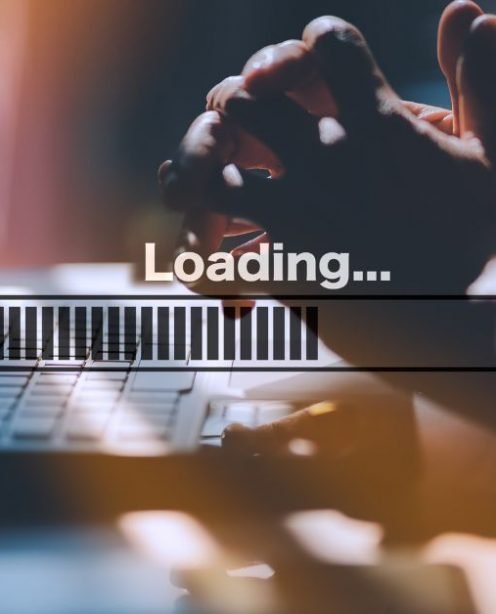The first presentation, ‘Hip, Hot Digital Brands', was given by Mark Lainas, Managing Partner and Head of Digital, Ogilvy and Mather, London. Mark shared examples of how some big brands have used video to great effect to spread a message or break out to reach new audiences.
He also talked about how longer video is finding a home on the internet. I should say, longer in this context seems to mean more than 30 seconds: long in comparison to the sort of video that marketers would be used to producing for TV spots or film trailers.
It's possible to build on the content of a short TV spot to develop the story or enhance the brand further. Dove are particularly good at this – they have done several long form videos which have expanded on their long running 'Campaign for Real Beauty'. The video of women having their sketches done is 3 mins long and has been watched over 62 million times in the past year. That's a phenomenal number which shows just how well this video works - this use of a longer form gives room to tell a story and allows viewers time to connect emotionally with the people featured.
In the Q&A at the end, someone asked about budgets for video, when compared to budgets for TV. Mark said that Ogilvy encourage their clients to spend the same on the two media. Part of this reasoning was down to the fact that the television audiences have fragmented as more channels have become available and so it's possible that an online video will reach a wider audience.
Using the example of the Dove campaign more widely, I wonder if that's always the right approach. There has been some backlash aimed at the campaign of late, some of which is in fact aimed at the quality of the video. There is a sense that it's too polished, and the women they choose to feature too beautiful and not diverse enough, for the campaign to work anymore. Might there be other, more interesting ways to keep this narrative going or enhance it?
I've had a couple of discussions since then with other people who attended the event who disagree with that the budget should be equal. A wider consensus suggests that it depends on the content. What is the story you're trying to tell? And what do your budgets realistically allow you to pay for? Of course, for those who could never afford a TV spot, online video is an exciting opportunity to play with and explore with this new format.
Richard Robinson, Director at Google, gave the second presentation about ‘A better way to build brands through video'. Richard outlined two key types of video content which he called 'hero' and 'hygiene' and the importance of building a 'hub'.
Hero content is the inspiring stuff, the stuff that you can get lost browsing through. Dove got a mention here too - they have expanded on the 'real women' idea with online only video content. This is the sort of content that goes viral – but Richard added a note of caution. With 100 hours of video being uploaded every minute, great videos don't just spontaneously find their way around the world.
If you want your video to go viral then you need to make sure people can find it. And that means you need to put your work somewhere that they will find it. Paid media and other techniques need to be employed to push the content out there. The great thing about a lot of the paid digital media is that you can monitor it in real time and adapt your effort to help it along the way.
Hygiene content is the stuff that people search for. Do you get asked the same question a lot? Does it show up in your search analytics? Maybe you could make a video to answer the question. YouTube is the second largest search engine in the world (according to Google - I haven't checked that statement) and videos are also promoted in Google's search results.
An interesting example of the use of this sort of content comes - surprisingly - from Salesforce who have posted a series of videos about their product on their YouTube channel. These videos answer all the questions that potential new clients ask before they sign on the dotted line and brings in as many clients as 217 members of their sales team.
These videos are an example of episodic content. Each one only tells you part of the story but the way that Salesforce manage their YouTube channel means that they can encourage a visitor to click on the next part of the story. In this way they have built up a 'hub', a channel that visitors will return to or subscribe to.
This can apply to hero content as well – it's possible to lose quite a few minutes watching all of Dove's videos once you've watched one. A good hub can help boost you up the search rankings for video so it's worth the extra effort. Another good example we were pointed towards was Jamie Oliver's YouTube channel.
Ogilvy and Google both test run their videos online and edit them according to the feedback that they get from comments and data, before finally launching them online (or on TV). Sites like YouTube give you stats on how your videos are doing so you can help pin point weaker spots and tweak your video content to make it better.
Another thing to consider is screen size. Richard gave some insteresting and useful stats from YouTube on this front. In 2011, 6% of YouTube traffic was from mobile; by 2013 that had risen to a huge 40%. People are also increasingly using larger screens, plugging their existing devices into TV screens, for example. So, when you're getting video produced – will it look as good on a 30” TV as you want it to?
Here are the highlights and the key points from the speakers themselves. Everyone at the networking afterwards seemed very friendly and chatty and the presentations seemed to spark a good amount of discussion. I'll definitely be back for another one! In the meantime I'm left trying to work out what exactly the hero and hygiene content for the cultural sector might look like.
**Update** 15 May 2014 - recently stumbled across some videos on the National Theatre's YouTube channel that struck me as a great example of hygiene content. They have a series of videos about vocal warm ups which have had very high viewings - much higher than a lot of the show trailers. Currently only War Horse and The Drowned Man (in the current productions group) have higher viewing numbers. Watch the first video in the vocal warm up series.




